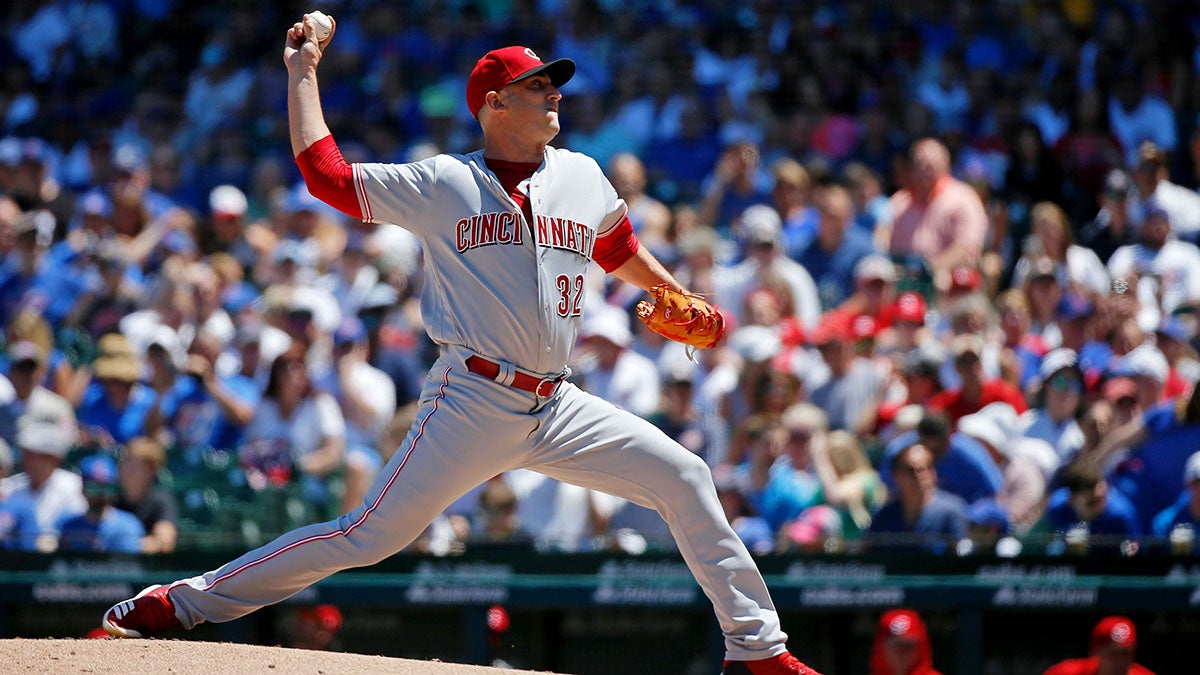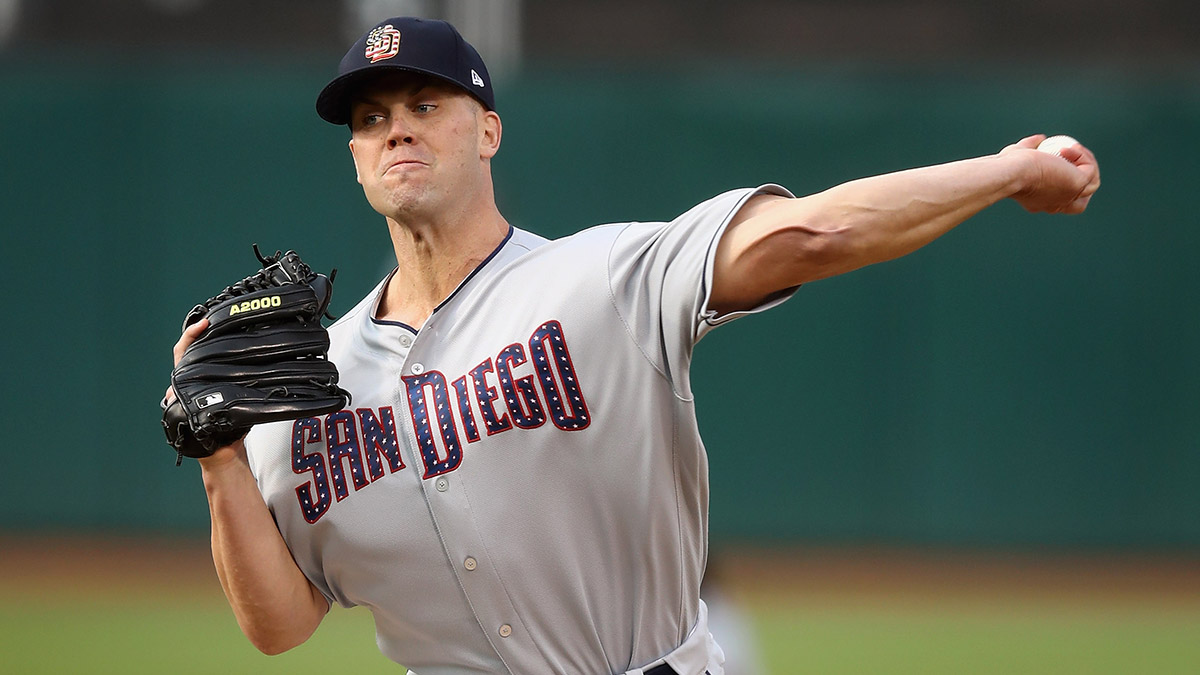Thoracic outlet surgery becoming go-to move for ailing pitchers

For Matt Harvey, the road to return from thoracic outlet surgery hasn’t been an easy one.
“No, it’s not,” he said recently.
Harvey burst on the scene in 2012 with the New York Mets as one of the top young pitchers in the Major League Baseball. But in 2018, he is trying to reclaim his career with the Cincinnati Reds.
He was New York’s top pick in the 2010 draft (seventh overall) after playing three seasons for the University of North Carolina. With an electric fastball, he won 12 of his first 26 big-league starts before blowing out his right elbow near the end of the 2013 season.
Harvey’s need for thoracic outlet surgery, which relieves pinching of blood vessels and nerves in the shoulder, in 2016 came three years after he underwent Tommy John ligament replacement surgery in the right elbow. Thoracic outlet syndrome has various symptoms, including numbness which Harvey experienced in his pitching hand.
“I no longer have nerve problems,” Harvey said. “It’s just a matter of getting all the strength and everything back. I’m starting to feel good. When I throw, the ball seems to be coming out of my hand good. It’s just a fine-tuning process now every start.”
Harvey is one of a growing list of major league pitchers who have undergone the relatively recent thoracic outlet procedure, which is becoming a go-to elixir for some problems pitchers experience in their throwing shoulders.
“Thoracic outlet is well-defined entity where the connection between the neck and the arm with the nerves, arteries and veins gets compressed,” said Dr. Anikar Chhabra, a long-time orthopedic surgeon and director of sports medicine at the Mayo Clinic in Phoenix. “The pathology of this is proximal to the shoulder joint.”
While there are structural problems that can’t be alleviated by the procedure, the prospect of better blood flow and lessened nerve damage is a huge benefit.
The San Diego Padres have four pitchers in their organization who have had the procedure: Clayton Richard and Tyson Ross have reclaimed their careers this year as competent pain-free starters; Phil Hughes, obtained from the Minnesota Twins in a late-May trade, has undergone the procedure twice; and Carter Capps, a reliever, like Harvey, has had Tommy John surgery followed 18 months later by thoracic outlet surgery.
[beauty_quote quote='“Thoracic outlet is well-defined entity where the connection between the neck and the arm with the nerves, arteries and veins gets compressed.” - Dr. Anikar Chhabra, director of sports medicine at the Mayo Clinic in Phoenix']
“We have a lot of familiarity with it,” Padres third-year manager Andy Green said. “There’s probably more guys who’ve had it with us than any other organization in baseball. It’s just a procedure that you get back from, depending on how hard you work. Also, some luck. Our guys have come back strong. Clayton has come back strong. Tyler is coming back strong. Phil is working back from it. It’s just an invasive procedure that guys really have to work to get back from.”
Hughes, once a highly touted starter in the New York Yankees organization, first had the surgery in 2016 when he was with the Twins. It didn’t relieve any of the symptoms, so a year later he had it again.
During the procedure, the first rib under the shoulder — the highest in the rib cage — is removed to help relieve pressure on the nerves and blood vessels.
In Hughes’ case, surgeons removed only a third of that rib the first time around.
“In the second surgery they removed more rib,” Hughes said. “They removed some scalene muscles from my shoulder and detached my pec minor. It was a little bit more invasive, but the rehab time was about the same.”
Hughes has since gone back on the disabled list with a strain of the rhomboid muscle behind his right shoulder. He had been pitching in relief and is hardly back to where he wants to be.
While Tommy John surgery has a rehabilitation time of 12 to 18 months, rehab time from thoracic outlet surgery is about six months. But until recently, the outcomes for the latter haven’t been very successful.
A Relatively New Procedure
The first ulnar collateral ligament replacement surgery was conducted by Dr. Frank Jobe on Los Angeles Dodgers left-hander Tommy John in 1974. The procedure threads a ligament taken from elsewhere in the player’s body into the elbow to replace the damaged UCL. It has since been performed on thousands of players at every level from Little League to the majors.
John’s surgery was so successful he recorded 164 of his 288 wins after recovering from the landmark procedure. John was 32 at the time of the surgery and pitched until he was 46.
In contrast, Josh Beckett of the Dodgers was, in 2013, one of the first pitchers to undergo successful thoracic outlet surgery, including throwing a no-hitter in 2014. A hip injury ended his career, not shoulder problems.
The active pitchers mentioned earlier have had compound shoulder injuries that didn’t seem to heal until thoracic outlet syndrome was diagnosed. The jury is still out on whether the surgery is going to fully revive any of their careers.
And misdiagnosis of the injury seems the greatest culprit, Dr. Chhabra said.
“It’s something that’s out there, but it’s a rare problem,” he said. “We’re seeing it more and more as we’re learning about it more, as we’re identifying it, as we’re getting the diagnosis earlier. We’re identifying the problem as we’re learning about it.”
[beauty_quote quote='“My fingers would go numb after the first few pitches I threw in the game I thought that was just normal from your arm accelerating at that speed. I was in extreme shoulder pain all the time. It was not fun. Every morning I woke up wondering if this was the day my shoulder was going to completely blow out." - San Diego Padres pitcher Clayton Richard']
Chhabra warned that thoracic outlet surgery is not the magic wand to make the pitching shoulder better the way Tommy John surgery did for so many elbows. And even with Tommy John surgery, the recurrence rate can be as high as 50 percent, said Dr. James Andrews, the independent orthopedic surgeon who has performed more of those procedures than anybody during the last decades.
“There’s so much pathology in the throwing shoulder,” Dr. Chhabra said. “It’s different than a normal shoulder. They have external rotation problems, loss of internal rotation, they put pressure on the labrum that leads to muscle tears. A lot of them have internal impingement due to that, which causes rotator cuff-type symptoms. Those are completely different beasts.”
The road ahead
Richard had suffered through years of left shoulder problems and two other procedures to clean out and correct ailments in the shoulder before he was finally diagnosed with thoracic outlet syndrome in 2014.
He has pitched for three teams and is currently in his second tour with the Padres. His first ended in 2013 with an A/C joint resection. He missed the 2014 season save for four starts in the Arizona Diamondbacks’ minor league system.
“The first two [procedures] didn’t make me feel any better,” Richard said. “I was still struggling. I couldn’t throw. I went to St. Louis and scheduled the [thoracic outlet] surgery. I went in on a Friday and came out on a Sunday. When I eventually threw I felt like I had a new arm.”
Prior to the surgery, Richard checked his symptoms with former Padres teammate and left-handed pitcher Chris Young, who also had thoracic outlet surgery “and it checked out all the way down his list,” Richard said.

Down to the tell-tale numbness in the fingers.
“My fingers would go numb after the first few pitches I threw in the game,” Richard said. “I thought that was just normal from your arm accelerating at that speed. I was in extreme shoulder pain all the time. It was not fun. Every morning I woke up wondering if this was the day my shoulder was going to completely blow out.”
Today, Richard is pitching pain-free and has made 17 starts for the Padres. He has worked six innings or more in his last 10 starts. He’s 34.
Richard’s teammate, Ross, is also in his second stint with the Padres. In 2016, Ross, a 6-foot-6 right-hander, was given the coveted assignment of pitching on opening day. He allowed eight runs on nine hits in 5 ⅓ innings of a 15-0 loss to the Dodgers and because of shoulder pain never pitched again that season.
“I just had pain in my shoulder that I couldn’t shake,” Ross recalled. “I didn’t have the numbness, tingling or loss of feeling in my [pitching] hand. Just the pain that wouldn’t go away and limited range of motion.”
But by a process of elimination, the diagnosis was also thoracic outlet syndrome.
“I just checked off every other box,” Ross said.
Ross had the surgery in October 2016. It took him six weeks and a year pitching in Texas for the Rangers for him to fully recover.
Like Richard, Ross, at 31, looks like his old self. He has made 15 starts for the Padres and has a 3.32 ERA in 95 innings. On April 20 at Chase Field against the D-backs, he went into the eighth inning throwing a no-hitter, what would have been the first in the club’s 50-year history. He settled for a one-hitter.
Harvey had a falling out with the Mets, who put him in the bullpen this season after a series of subpar starts. When he declined to go to the minors to retool as a starter, the Mets traded him to Cincinnati where he was given that chance.
In a June start in Atlanta, Harvey made it two outs into the seventh inning in a 5-3 victory against the Braves.
For Harvey, 29, it was his longest start since April 6, 2017. He’s one of the recent thoracic outlet surgery success stories, so far.
“[At least] we’re on the right path,” Harvey said.
Barry M. Bloom has been a baseball writer since 1976, and a National Baseball Hall of Fame voter since 1992. His sometimes award-winning national reports and columns appeared on MLB.com for the past 16 years, until recently. He’s now a contributing columnist for Forbes.com.

